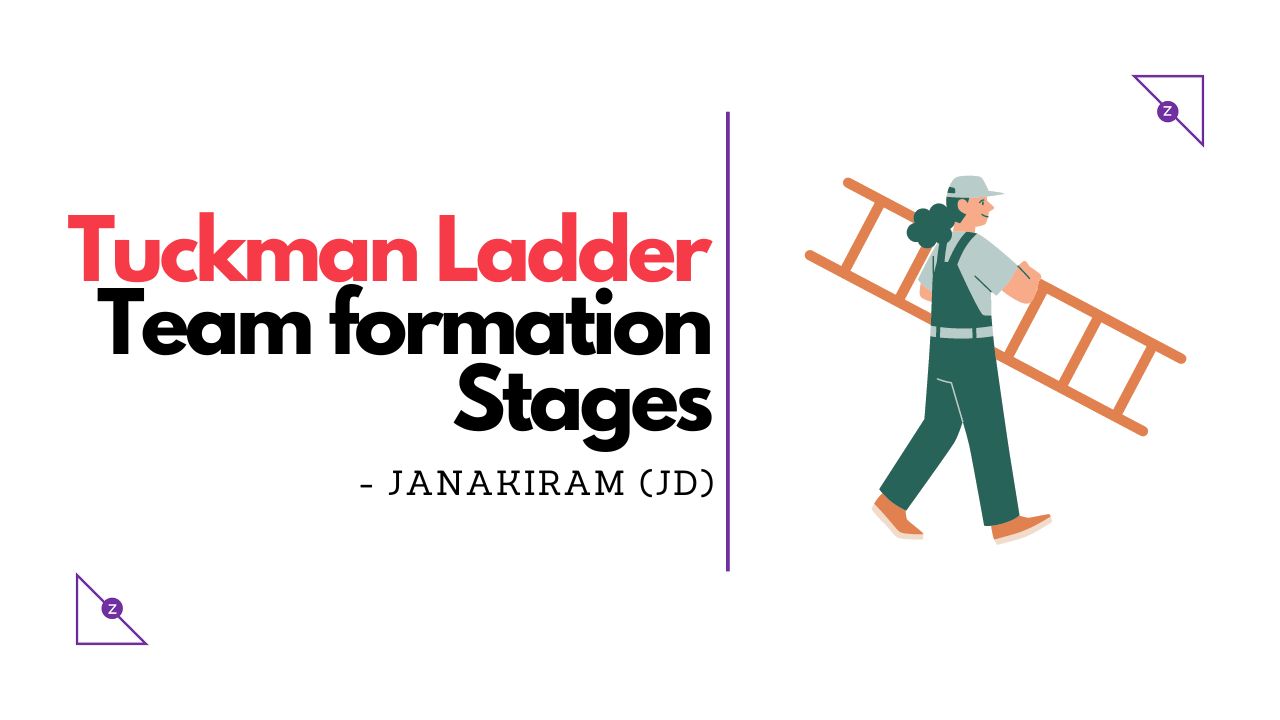The Tuckman ladder, often referred to as Tuckman’s stages of group development, is a model that describes the different phases that teams typically go through as they form, grow, and eventually dissolve. The Tuckman ladder is a valuable tool for understanding group dynamics and can help leaders and team members navigate the challenges and transitions that occur as teams evolve.

Developed by psychologist Bruce Tuckman in 1965, this model outlines four primary stages:
- Forming
- Storming
- Norming
- Performing
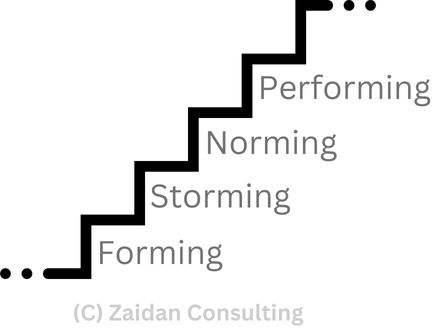
In the realm of team dynamics and group psychology, the Tuckman Ladder, remains a fundamental model for understanding the phases that teams go through as they form, evolve, and eventually disband. This model provides valuable insights into the complexities of group development and highlights the key stages that every team experiences on its journey towards optimal performance.
#1 Forming
In this initial stage, team members are introduced to each other, and there is a focus on orientation and testing the waters. Individuals are generally polite and feel out the dynamics of the group. There is typically a reliance on the leader for guidance and direction.
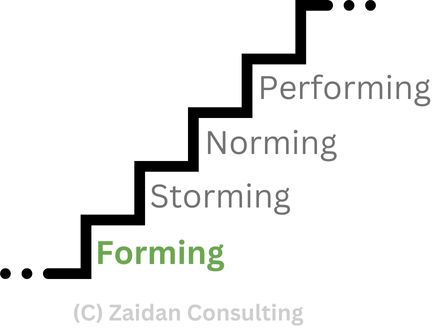
The journey of a team typically begins with the “Forming” stage. In this phase, initial interactions are marked by politeness and caution. Individuals are often unclear about their roles and responsibilities within the group, and there is a reliance on the designated leader for guidance and direction. This stage is characterized by orientation and testing the waters as the team members get to know each other.
#2 Storming
As the team progresses, members start to express their individuality and differences. This can lead to conflicts and power struggles as individuals establish their roles within the group. This phase is crucial for growth, as it helps to clarify goals and develop stronger bonds.
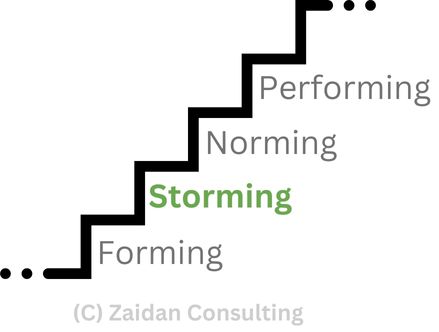
The “Storming” stage, is often marked by conflicts and power struggles. This phase is critical for growth as team members start asserting their individuality and expressing differing opinions and ideas. Challenges related to authority, roles, and goals surface during this stage. Effective teams navigate through this phase by addressing conflicts constructively and establishing clearer norms and expectations.
#3 Norming
During this stage, the team begins to resolve their differences and establish norms and expectations for behavior. Members start to collaborate more effectively and may develop a sense of camaraderie. Roles become clearer, and the team starts working towards common goals.
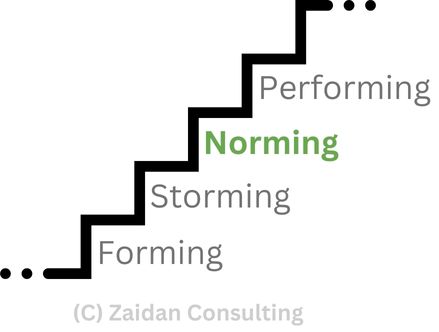
With conflicts resolved and roles clarified, teams transition into this stage. Trust and collaboration among team members strengthen, facilitating smoother workflows and goal alignment. There is a sense of cohesion and shared purpose as the team moves towards collective goals.
#4 Performing
In the final stage, the team reaches a state of high performance. Trust and communication are strong, and the group operates efficiently as a cohesive unit. Members are autonomous and take collective responsibility for achieving objectives.
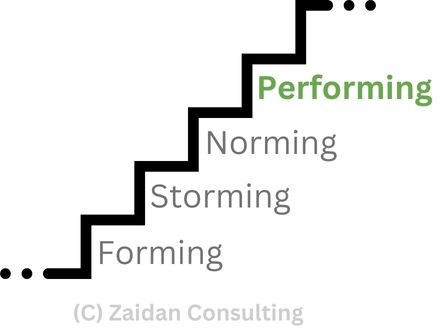
The ultimate goal of team development is to reach the “Performing” stage. Here, the team operates at its peak efficiency. Communication is open and effective, and members collaborate seamlessly towards achieving common objectives. Individual strengths are leveraged, and there is a high level of autonomy and mutual accountability. The team functions as a cohesive unit, producing outstanding results.
Tuckman later added a fifth stage called Adjourning
The Fifth Stage: Adjourning
This involves the eventual disbanding of the team once its goals have been accomplished or the project is completed. This stage focuses on closure and recognizing the achievements and experiences gained during the team’s lifespan. During this phase, team members reflect on their experiences, celebrate achievements, and prepare for future endeavors.
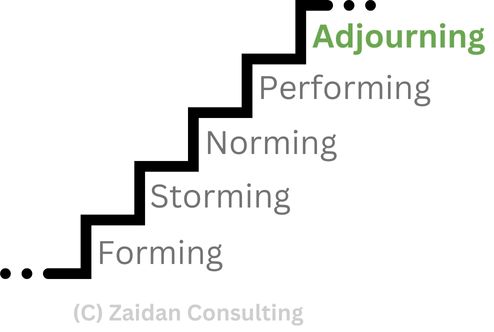
Implications for Team Leaders and Members:
- Leadership Adaptation: Leaders can adapt their leadership style based on the team’s developmental stage, providing the necessary support and guidance to facilitate progress.
- Conflict Resolution: Acknowledging and addressing conflicts constructively during the Storming stage can pave the way for smoother transitions into subsequent stages.
- Building Trust: Emphasizing trust-building activities and fostering open communication can expedite the team’s journey towards peak performance.
Conclusion
The Tuckman Ladder remains a timeless framework for comprehending the nuanced phases of team development. By recognizing and leveraging these stages, teams can navigate challenges more effectively, foster stronger relationships, and ultimately achieve remarkable success. Embracing the principles of Tuckman’s model empowers both leaders and team members to optimize their collaborative efforts and maximize their collective potential.

Our PMI® PMP®-Prep Course
If interested in this course, click here
- Case study based training
- LIVE instruction 36 Hours
- Post course guidance
- Exercise per topic
- 4 Mock exams for practice
- WhatsApp group support

Our PMI® ACP®-Prep Course
If interested in this course, click here
- WhatsApp group support
- 4 Mock exams for practice
- Exercise per topic
- LIVE instruction 20 Hours
- Post course guidance
- Case study based training

JD (Coach/Instructor/Writer)
JD (a.k.a Janakiram) is a Project Management Coach, Trainer Author and Practitioner @Zaidan Consulting. He comes with around 17+ Years of experience primarily from the Software Industry. He is certified on PMI® PMP®, ACP®, Scrum Alliance CSM and Microsoft Certified Solution Developer on C#.NET. He has also authored the book “Practical Agile for Beginners”

About Zaidan Consulting
Zaidan Consulting are specialists in Project and Program Management space. Our training offerings include:
- Project Management Training
- Agile Training
- PMI®-ACP® Prep Training
- PMI®-PMP® Prep Training
- PMI®-CAPM® Prep Training
- ScrumStudy™ Authorized Training Partner (A.T.P)
Or you can contact us @+(91) 7672011471
Or Email us: contact@zaidanconsulting.com
